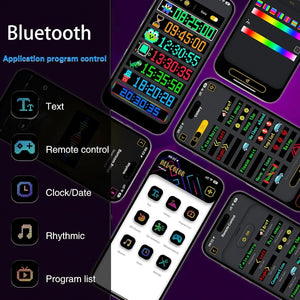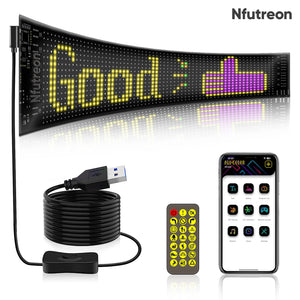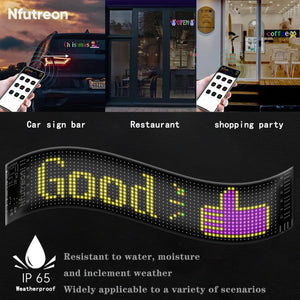Monochrome LED matrix panels are used in many applications from simple clocks to industrial displays. They work by lighting up individual LEDs in a grid to create images or text. In this article we’ll go through how they work, the components and the uses.
What are Monochrome LED Matrix Panels?
Monochrome LED matrix panels display images using a grid of LEDs. “Monochrome” means these panels use only one colour—usually red, green or blue. They’re simpler and cheaper than full colour panels so great for basic displays.
Basic Structure
These panels are made up of rows and columns of LEDs. Each LED is a pixel. When turned on or off they form different patterns or letters. The more LEDs the clearer the image.
Components
-
LEDs: These are the tiny lights that make up the display. They emit one colour.
-
Printed Circuit Board (PCB): This holds the LEDs and connects them to the rest of the circuit.
-
Drivers and Controllers: These control the current to the LEDs, which ones light up.
-
Power Supply: The power needed for the panel to work.
How They Display Information
Monochrome LED matrix panels work by lighting up certain LEDs in the grid. A microcontroller sends signals to the drivers telling them which LEDs to light. By switching LEDs on and off quickly the panel can show moving text or images. This rapid switching creates smooth, clear displays that are easy to read.
Microcontrollers
Microcontrollers are the brain of the LED panel. They handle:
-
Data Input: Taking in data to decide what to display.
-
Timing: Controlling the speed at which LEDs turn on and off.
-
Brightness: Controlling the amount of current to control how bright the LEDs are.
Arduino and Raspberry Pi are common microcontrollers.
Wiring and Circuit Design
Wiring in these panels is in a grid. Each LED connects to a specific row and column. This allows individual control of each LED. Common designs are:
-
Row-Column Scanning: Turning on one row at a time while the others are off, creating images by quickly switching rows.
-
Multiplexing: Sharing connections among LEDs to simplify wiring and reduce cost.
Software
LED panels are often controlled by software.
-
Arduino IDE: For simple displays.
-
Python: For more complex control, often used with Raspberry Pi.
-
Custom Software: For specific uses.
These allow you to create custom displays and control multiple panels.
Common Uses
Monochrome LED matrix panels are useful for:
-
Digital Clocks: Simple, clear time displays.
-
Information Displays: Schedules, news, alerts.
-
Industrial Monitors: Equipment status or warnings.
-
Signs: Basic advertising or informational signs.
Advantages
There’s many advantages of using monochrome LED matrix panels:
-
Affordable: cheaper than full colour displays.
-
Low Power: uses less power, great for battery powered devices.
-
Visible: bright enough to see in most lighting conditions.
-
Tough: LEDs last long and can withstand rough use.
Common Issues and Fixes
Like all technology, these panels can have problems:
-
Dead LEDs: Individual LEDs might burn out, leaving dark spots.
-
Power Problems: If the power supply is weak, the display might flicker.
-
Connection Issues: Loose or faulty connections can cause parts of the display to fail.
Regular maintenance and using quality components can help avoid these issues. If problems occur, check connections, replace dead LEDs, and ensure a stable power supply.
Monochrome LED matrix panels are a simple yet powerful tool for displaying information. By understanding how they work, you can better use them in various applications. Whether it's for a clock, a sign, or a piece of equipment, these panels offer a reliable and efficient way to communicate.





